Disclosure: This article contains affiliate links. We may earn a commission from purchases at no extra cost to you, which helps our travel content.
There's something deliciously subversive about loving Canberra. Australia's purpose-built capital often gets dismissed as merely a political machine, a city of roundabouts and civil servants. But as someone who's spent two decades documenting overlooked landscapes, I've found that the most fascinating destinations are frequently those hiding in plain sight. Canberra—with its masterful urban planning, architectural audacity, and surprising pockets of creativity—is precisely such a place. This spring weekend, I discovered a city that reads like a well-edited anthology: deliberately structured yet full of unexpected narratives. For families seeking a cultural adventure beyond Sydney's harbors or Melbourne's laneways, Canberra offers an accessible introduction to urban exploration where national identity, artistic vision, and natural beauty converge in surprising harmony.
Parliament House: Where Architecture Meets Democracy
The first rule of editing is to understand structure before attempting revision. The same principle applies to exploring Canberra, and there's no better place to start than Parliament House. Unlike many legislative buildings that barricade themselves behind imposing facades, this architectural masterpiece by Mitchell/Giurgola & Thorp Architects literally invites citizens to walk over their government—the sloping grassy roof a physical manifestation of democracy's ideals.
Approaching from Commonwealth Avenue on a crisp spring morning, I watched the massive flagpole (nearly 250 feet tall) pierce the cerulean sky like an editor's decisive pencil mark. Inside, the building reveals itself as a masterclass in symbolic design. The Marble Foyer's 48 columns represent the federation of Australia's states, while natural light streams through strategically placed skylights, illuminating the democratic process both literally and metaphorically.
For families, Parliament House offers an unexpectedly engaging experience. My guide, a former parliamentary staffer named Eliza, expertly translated complex political processes into accessible stories that captivated even the children in our tour group. When Parliament is sitting, visitors can witness democracy in action from the public galleries—a civics lesson more powerful than any textbook.
The real revelation came in discovering the Parliament House Art Collection. With over 7,000 works, it's one of Australia's most significant collections of contemporary Australian art, yet remains relatively unknown to international visitors. Standing before Michael Nelson Jagamara's massive mosaic in the forecourt, I watched as children traced the Dreamtime patterns with their fingers, connecting instinctively with stories 40,000 years in the making.
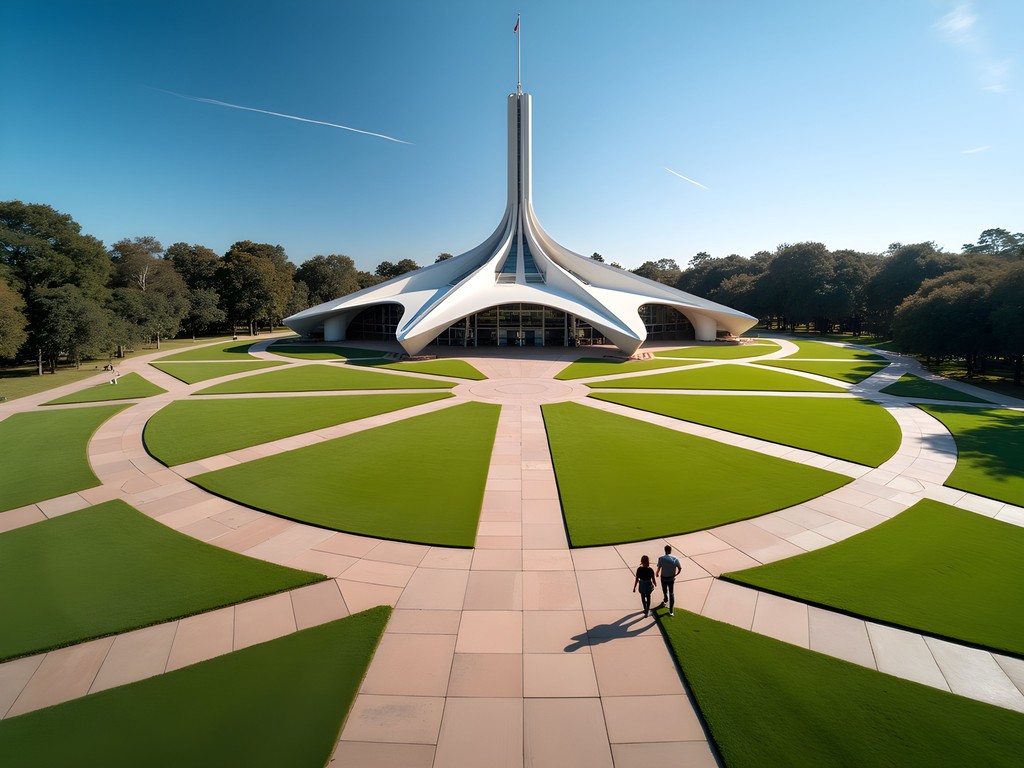
💡 Pro Tips
- Book a free guided tour in advance to skip the lines and gain insider knowledge
- Visit during Question Time (2pm when Parliament sits) to see political theater at its most dramatic
- Don't miss the rooftop for spectacular city views and a unique perspective on the building's design
The National Arboretum: A Forest of Stories
If Parliament House represents Australia's political aspirations, the National Arboretum embodies its environmental consciousness—and provides a welcome counterpoint for families needing open space after museum visits. Rising from the ashes of devastating bushfires in 2003, this 250-hectare living museum houses 94 forests of rare, endangered, and symbolic trees from around the world.
The site's backstory resonated deeply with me. After my own health scare five years ago forced a career pivot, I've been drawn to landscapes of renewal. The Arboretum represents exactly this kind of redemptive transformation—land scarred by fire now nurturing forests for future generations.
For children, the Pod Playground is nothing short of magical. Designed to resemble acorn-like seedpods, these towering wooden structures connected by rope tunnels and slides had me wishing I could shed 30 years and join the gleeful chaos. Parents, meanwhile, can enjoy coffee at the spectacular Sprout Cafe while keeping watch through its panoramic windows.
To fully appreciate the site's scale and vision, I recommend starting at the award-winning Village Centre. Its undulating wooden roof mimics the surrounding hills while housing excellent interpretive displays. From there, a network of accessible paths leads to various forests and viewpoints. Bring your compact binoculars to spot some of the 80+ bird species that have made the arboretum home.
The Himalayan cedar forest proved particularly transportive. Walking among these stately trees, their branches creating cathedral-like spaces, I felt the same reverence I once experienced in ancient European churches—proof that nature crafts sacred spaces as effectively as human architects.
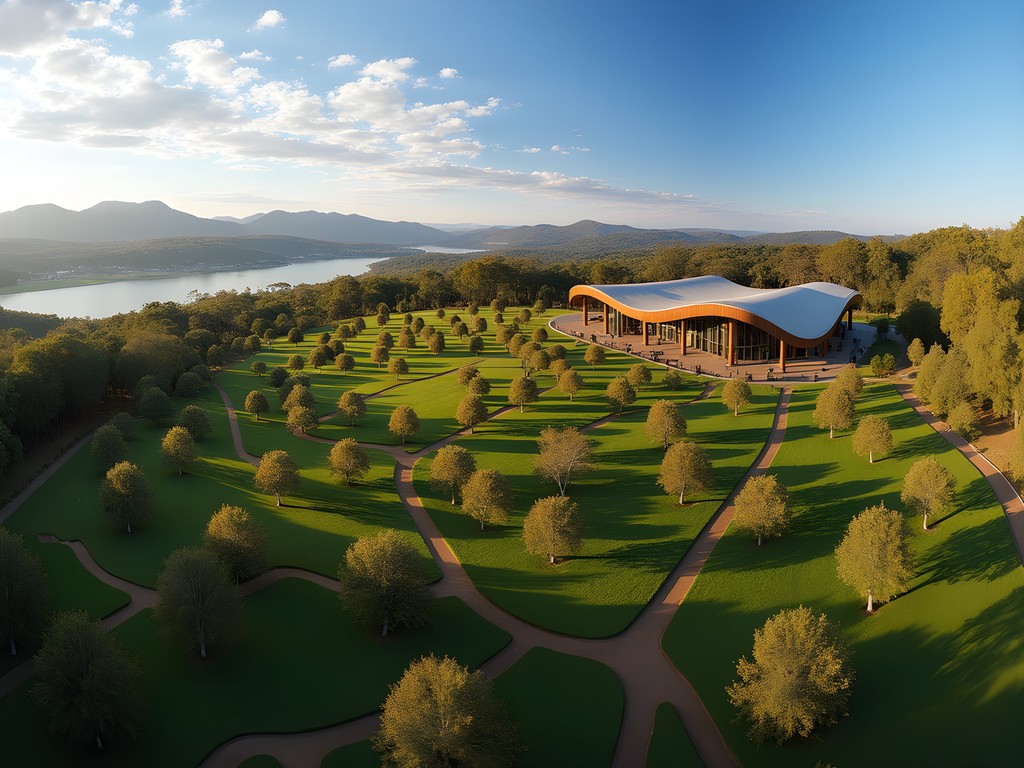
💡 Pro Tips
- Visit early morning for the best light and fewer crowds
- Pack a picnic to enjoy at one of many scenic outlooks
- Check the website for seasonal guided walks focusing on different forest collections
New Acton Precinct: Urban Regeneration as Art Form
Every city has its narrative arc, and Canberra's most compelling recent chapter can be found in the New Acton precinct. This mixed-use development represents urban regeneration as a creative discipline—much like how a skilled editor can transform a promising manuscript into something extraordinary.
At the heart of New Acton stands the Nishi Building, a sustainable architectural marvel housing Hotel Hotel (now Ovolo Nishi). The hotel's entrance—a cavernous tunnel crafted from thousands of repurposed timber fragments—feels like walking through a physical manifestation of organized chaos. It's the kind of space that demands presence, pulling you firmly into the now.
The precinct exemplifies what urban planners call the 'third place'—neither home nor work, but community spaces where public life unfolds. On Saturday morning, I joined locals at the Farmers Market, where the scent of fresh sourdough from Three Mills Bakery mingled with the earthy perfume of mushrooms cultivated in nearby Majura. Children darted between stalls while parents balanced coffee cups and produce bags.
For families exploring Canberra, New Acton offers an ideal base. The precinct's pedestrian-friendly design, proximity to Lake Burley Griffin, and diverse dining options make it logistically practical. But it's the area's commitment to integrating art into everyday spaces that makes it truly special.
Case in point: Palace Electric Cinema. This isn't just a movie theater but a cultural hub screening everything from blockbusters to art house films. Before an evening showing, I watched as a father explained the vintage movie posters to his fascinated daughter—cultural literacy passing between generations.
After a day of exploration, I treated myself to dinner at Monster Kitchen and Bar. While certainly not budget dining, their seasonal menu showcasing regional producers offered a culinary narrative of the surrounding landscape. My travel journal quickly filled with notes on their innovative yabby dish with native ingredients—inspiration for my own kitchen experiments back home.
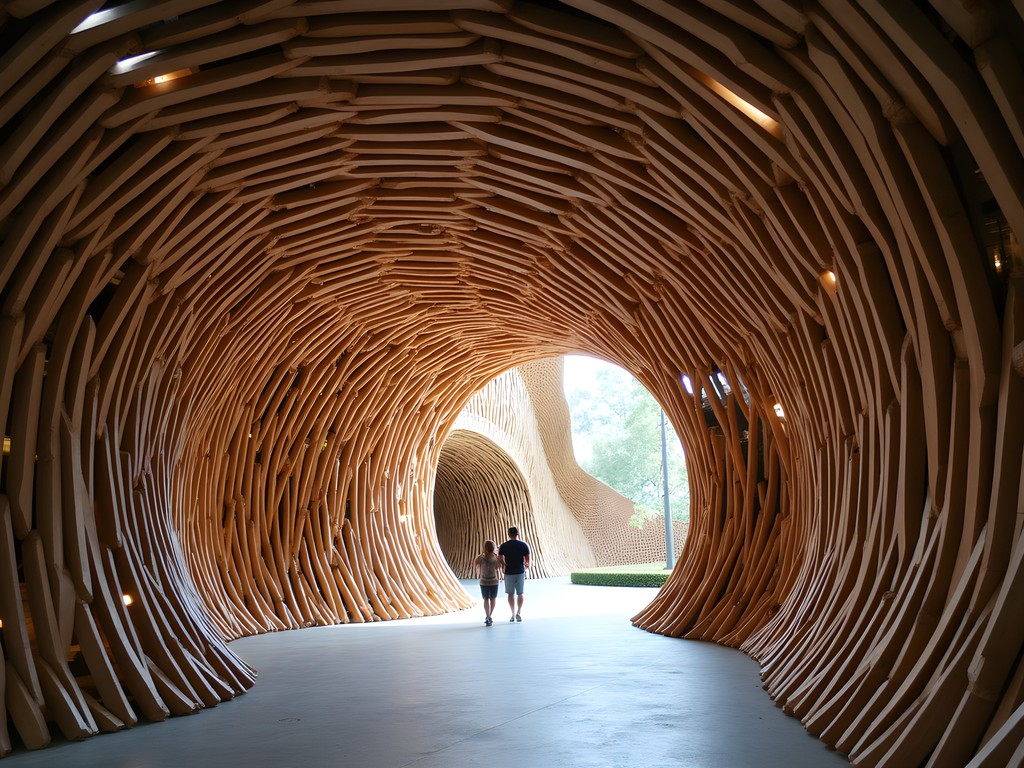
💡 Pro Tips
- Visit the Nishi Gallery for rotating exhibitions by local artists
- Take advantage of free building tours offered monthly (bookings essential)
- Enjoy the outdoor sculpture garden between the heritage-listed buildings
The National Museum of Australia: Reading Between the Lines
If cities were books, museums would be their most revealing chapters. The National Museum of Australia—with its controversial architecture and innovative approach to storytelling—offers perhaps the most honest reading of Australia's complex national narrative.
The building itself defies conventional museum design. Architect Howard Raggatt created a structure of interlocking loops and knots, symbolizing the intertwined stories that form Australian identity. The bright red loop extending from the building's façade has become an iconic landmark, though few visitors realize it's shaped as a question mark when viewed from above—a perfect architectural metaphor for a museum that raises as many questions as it answers.
For families with children of different ages, this museum excels at providing multiple entry points to complex topics. The Garden of Australian Dreams—an outdoor landscape installation representing various mapping systems of the continent—had children racing across its colorful surface while adults contemplated deeper symbolism. Inside, the Landmarks gallery uses immersive environments and hands-on interactives to explore how different landscapes have shaped Australian communities.
As someone who's spent considerable time documenting endangered cultural practices, I was particularly moved by the First Australians gallery. Rather than presenting Indigenous cultures as static artifacts, the exhibition emphasizes continuity and contemporary relevance. Interactive digital displays allow visitors to hear stories directly from community members—an editorial choice that prioritizes first-person narratives over institutional interpretation.
To fully appreciate this museum, I recommend using the audio guide to uncover the many layers of meaning embedded in both exhibits and architecture. For families, the museum offers excellent activity booklets tailored to different age groups, transforming the visit into an engaging treasure hunt.
After several hours exploring inside, take time to walk the perimeter path along Lake Burley Griffin. The changing perspectives of the building against water and sky reveal new architectural details with each turn—a reminder that understanding any culture requires multiple viewpoints.

💡 Pro Tips
- Allow at least 3 hours to properly explore the main galleries
- Visit the rooftop garden for panoramic views of Lake Burley Griffin
- Check the website for family-focused tours and weekend workshop schedules
Mount Ainslie Lookout: Reading the City's Blueprint
Every editor knows that sometimes you need to step back from the manuscript to see the overall structure. Similarly, to truly comprehend Canberra's design genius, you must view it from above. Mount Ainslie Lookout offers precisely this perspective—a vantage point that reveals how landscape architect Walter Burley Griffin's vision translated onto the Australian terrain.
The lookout sits at the terminus of ANZAC Parade, directly aligned with the War Memorial and Parliament House along what's known as the Land Axis. This perfect symmetry becomes apparent only from this elevation, where the city's geometric plan unfolds like an architectural manuscript.
Rather than driving up (though that's certainly an option for families with young children), I chose to hike the Mount Ainslie Summit Trail. The 4km round-trip climb follows a well-maintained path through eucalyptus woodland, where crimson rosellas flashed between branches and eastern grey kangaroos observed my progress with mild curiosity. For families with older children, this walk offers an ideal blend of nature and urban exploration.
The trail is dotted with plaques featuring excerpts from soldiers' letters during the Gallipoli campaign—a poignant reminder of the ANZAC tradition that forms such a central part of Australian identity. These fragments of personal narrative provide emotional counterpoint to the monumental scale of the War Memorial visible below.
At the summit, I unpacked my small picnic: local cheese, fruit, and crackers, along with my trusty insulated water bottle that had kept my water refreshingly cold throughout the climb. As the afternoon light softened, I watched shadows lengthen across the city grid while pointing out landmarks to a delighted family whose children were competing to spot the Parliament House flag first.
The summit offers more than just pretty views—it provides a master class in urban planning. From here, you can trace the main avenues radiating from Capital Hill, identify the distinct precincts separated by greenbelts, and appreciate how the city nestles within the surrounding landscape rather than dominating it. It's urban design as narrative structure—a story told through streets, buildings, and carefully preserved natural spaces.
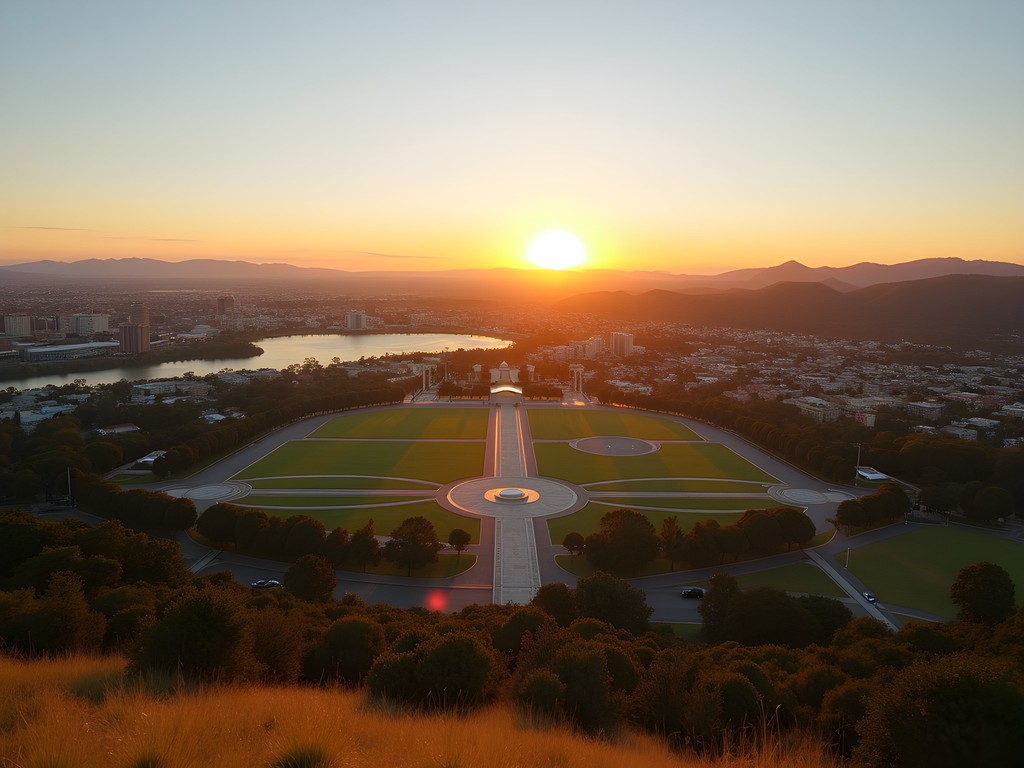
💡 Pro Tips
- Visit at sunset for dramatic lighting across the Parliamentary Triangle
- Bring binoculars to spot architectural details across the city
- Look for informational plaques that explain the city's design elements visible from this vantage point
Final Thoughts
Like any well-crafted anthology, Canberra rewards those willing to read beyond the introduction. This city—so often dismissed as merely a political construct—reveals itself as a thoughtful meditation on democracy, environment, and national identity when given proper attention. For families seeking an urban adventure that balances educational value with genuine enjoyment, Canberra offers a refreshing alternative to Australia's coastal capitals. As I watched children racing across the Parliamentary forecourt, their parents pointing out architectural details overhead, I was reminded that the best travel experiences are those that engage multiple generations in different ways. Whether you're tracing Walter Burley Griffin's geometric vision from Mount Ainslie, contemplating contemporary art in New Acton, or simply watching kangaroos graze at sunset beside the National Arboretum, Canberra invites visitors to become active participants in reading Australia's evolving national narrative.
✨ Key Takeaways
- Canberra excels at family-friendly cultural experiences that engage both children and adults
- The city's deliberate design reveals itself best when exploring both architectural highlights and elevated viewpoints
- Spring offers ideal conditions for combining urban exploration with nature experiences in the city's extensive green spaces
📋 Practical Information
Best Time to Visit
Spring (September-November) when temperatures are mild and gardens blooming
Budget Estimate
$150-250 AUD per day for a family of four, including accommodations, attractions and meals
Recommended Duration
2-3 days minimum to explore major highlights
Difficulty Level
Easy - Most Attractions Are Accessible And Close Together

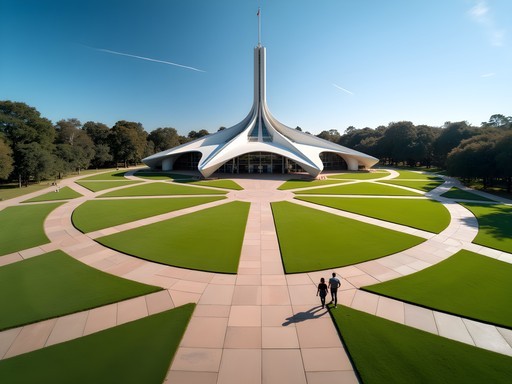

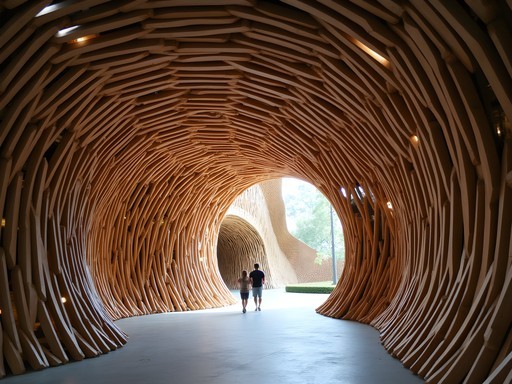
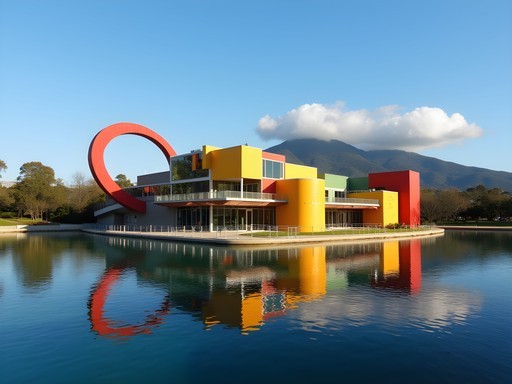




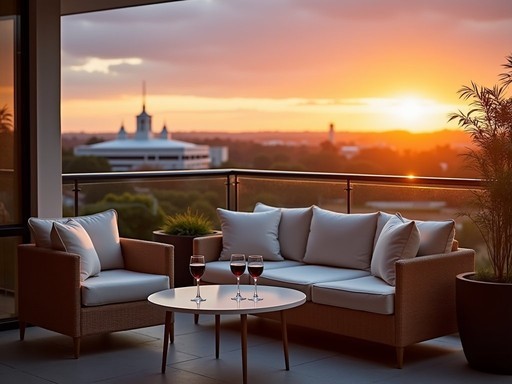






Comments
Riley Griffin
Leah, this post brought back wonderful memories! We took our kids (11, 9 and 7) to Canberra last year expecting it to be the 'educational but boring' part of our Australia trip. Boy, were we wrong! The kids were fascinated by Parliament House - there was a mock debate happening in the Senate chamber that they got to participate in. And Questacon? That science center alone was worth the trip! My daughter still talks about the free-fall slide. One tip for families: the National Arboretum has one of the coolest playgrounds we've ever seen - giant acorn-shaped climbing structures that even my jaded pre-teen thought was 'actually pretty awesome.' The Pod Playground, I think it was called. Totally agree that Canberra deserves more love in travel circles!
blueguide
Those sunset pics from the Arboretum are stunning! Added to my list.
skynomad
Going to Canberra next month! Is public transport good enough to get around or should I rent a car?
smartmaster583
Definitely rent a car! Canberra is super spread out and buses aren't that frequent. I used my rental app and got a great deal. Made exploring so much easier!
Riley Griffin
I'd actually disagree slightly! We managed fine with buses and the occasional rideshare with three kids in tow. If you're staying central and focused on the main attractions, public transport works. But if you want to explore beyond or value flexibility, a car is better. The city's really well-planned with wide roads and plenty of parking.
Sophia Gomez
This post took me back to my unexpected love affair with Canberra last year! I was there for a business conference, dreading what I thought would be a dull government town. Instead, I found myself sneaking away from meetings to explore. The National Portrait Gallery became my lunchtime escape - smaller than the other institutions but so thoughtfully curated. And that lakeside morning run? Pure magic with the mist rising off Lake Burley Griffin at dawn. The Questacon science museum made me feel like a kid again too. Canberra really is Australia's best-kept secret. Thanks for highlighting its sophisticated side, Leah!
wanderchamp
Omg yes! Questacon! I forgot to mention that - felt like a 10-year-old again playing with all those science exhibits!
winterdiver
Just visited the National Arboretum last month and it was SPECTACULAR! Those bonsai trees are incredible. And you're so right about the city being underrated - we ended up extending our stay by 2 days because there was so much to see!
roambackpacker
Great post! I'm planning a weekend in Canberra next month. Is it easy to get around without a car? And any recommendations for where to stay near these architectural spots?
sunsetlegend
Not the author but I stayed in New Acton last year - perfect location and you can walk to a lot. Public transport is decent but a car helps for the outer spots.
Leah Clark
I'd second New Acton for accommodation! Public transport works well for the main sites, but I rented a electric bike for a day which was perfect for covering more ground while still enjoying the outdoors.
beachmate
Everyone told me to skip Canberra. Glad I didn't listen!
wildninja
Never thought I'd put Canberra on my bucket list but here we are! Those pics of New Acton convinced me.
Timothy Jenkins
Leah, you've captured Canberra's architectural narrative brilliantly. I visited last autumn and was particularly struck by the juxtaposition of brutalist and contemporary designs across the city. The National Museum's architecture is indeed a text in itself - those curves and colors speaking to Australia's complex identity. I'd add that the Australian War Memorial's somber geometry offers another fascinating architectural counterpoint. Did you get a chance to explore Braddon's emerging design scene? The adaptive reuse of industrial spaces there tells yet another chapter in Canberra's evolving story.
Leah Clark
Thanks Timothy! I did explore Braddon briefly - those converted warehouses housing design studios and microbreweries definitely deserve their own section. Maybe in a follow-up piece!
blueguide
The War Memorial is incredible. The Pool of Reflection gets me every time.
wanderchamp
Finally! Someone giving Canberra the love it deserves! I visited last year and was completely blown away by Parliament House - that grass roof you can actually walk on is such a cool concept. The view from the top is incredible! And the National Arboretum was such a surprise find. Those miniature trees in the bonsai pavilion are mind-blowing. Canberra's definitely got this understated coolness that most tourists miss.
Venture X
Premium card with 2X miles, $300 travel credit, Priority Pass